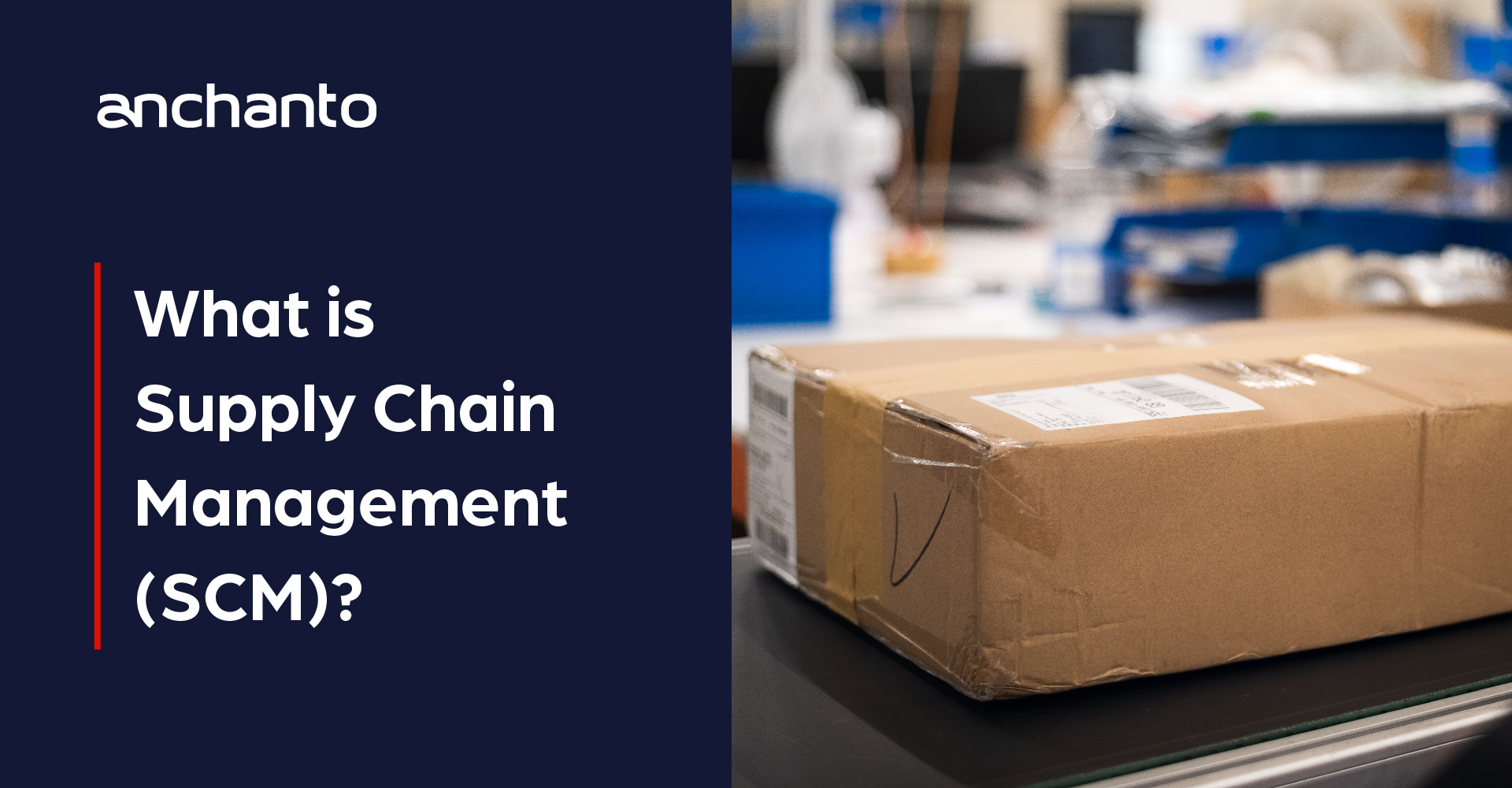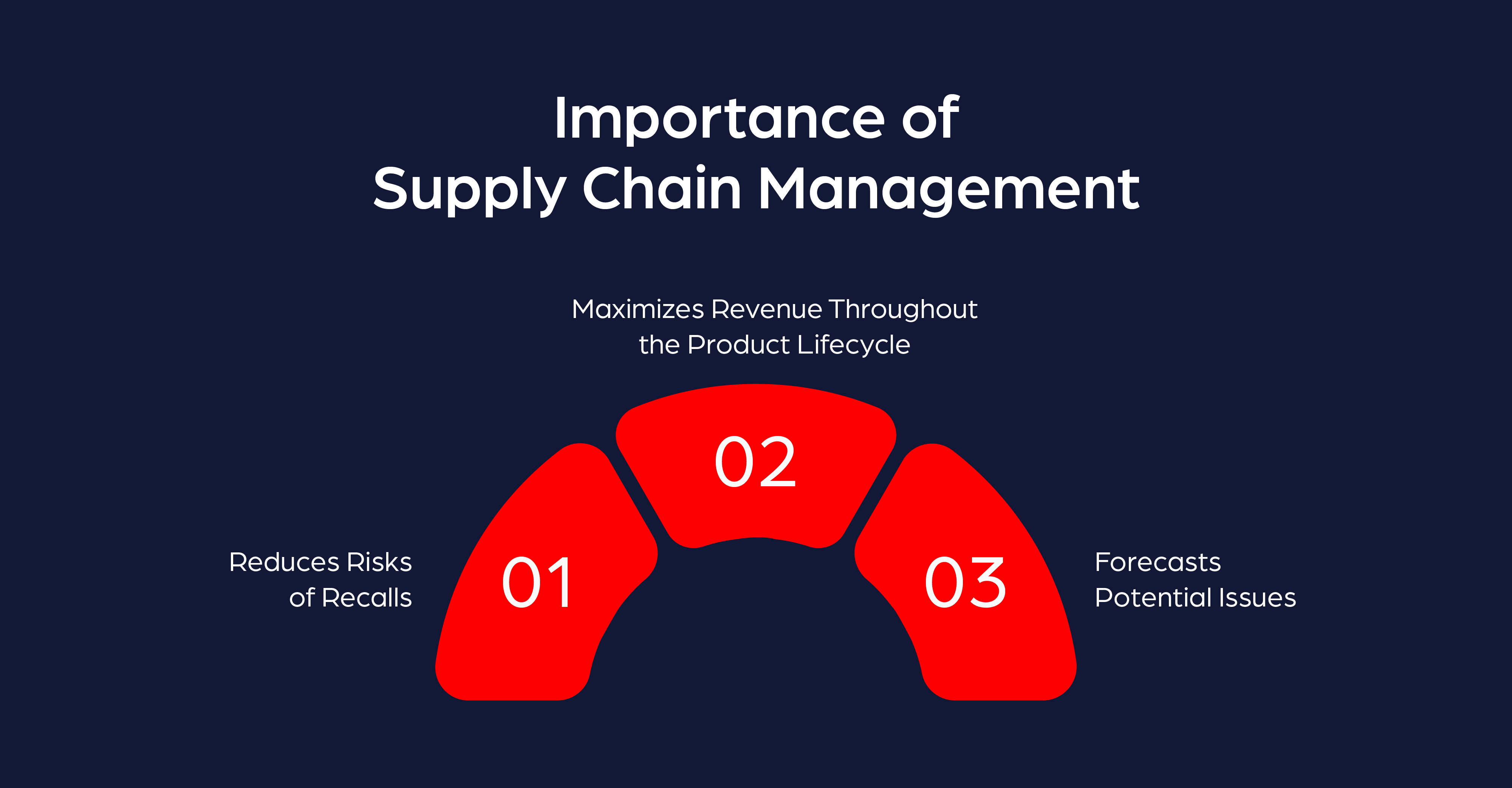
Exploring Supply Chain Definition and Efficient Supply Chain Management
As your business expands and you integrate e-commerce into your operations, you encounter new challenges that require innovative solutions. One major challenge could be with the management of your supply chain. Traditional methods no longer sustain evolving businesses and therefore require an innovative approach.
This demonstrates that in order to stay efficient and maintain a high standard of service, a robust solution is not just important for supply chain success — it is critical. In this article, we will explore:
- the supply chain definition
- what is efficient supply chain management (SCM)
- the importance of SCM in e-commerce
- the five core components of SCM
- how SaaS can help with supply chain management, and
- best practices when implementing a robust SaaS solution
What is Supply Chain Management?
In short, Supply Chain Management (SCM) governs the entire life cycle of a product or service — the flow of products, costs, and data encompassing everything from the initial acquisition of raw materials to the final delivery of the finished product to consumers.
SCM prioritizes risk mitigation and reduces uncertainties, aims for optimal cost-effectiveness and timely deliveries, while also fostering adaptability to changing needs. To implement and optimize SCM five critical aspects need your attention:
1. Planning
This first one involves strategizing your entire supply chain, ensuring there are enough resources to meet customer demand and achieve efficiency targets. Key metrics such as lead times and order fulfillment rates are established to monitor progress and ensure optimal performance.
2. Sourcing partners
Finding the right partners and building a good relationship with them are keys to sourcing the best materials. Treat it as a collaboration throughout the whole SCM process, from placing orders and receiving materials to managing inventory. This will allow smooth and optimal functioning of your supply chain.
3. Manufacturing and warehousing for distribution
Manufacturing is when the focus goes on transforming raw materials into high-quality finished products. Once produced, these items must be distributed for sale to relevant warehouses, distributors, retailers, and 3PLs. At this phase, efficient quality control measures, proper packaging for shipment, or smart scheduling for deliveries should be embraced.
4. Delivery and logistics
Finally, to ensure the seamless flow of products from your company to the end user, you must streamline customer order coordination, scheduling deliveries, dispatching shipments, invoicing customers, and collecting payments.
5. Returns and exchanges
A system should be set up to effectively manage the returns and exchanges of defective, excess, or unwanted products. This encourages positive customer experiences and minimizes potential disruptions within the supply chain.
Why is Supply Chain Management Important?
Now that we have covered the supply chain definition and zoomed in on the five core components of SCM, it’s time to observe what makes supply chain management paramount to business success:

- Reduces risks of recalls
SCM encourages quality control and clear visibility into production and stock management, which reduces the risk of costly recalls and builds trust with your customers. This translates directly to a stronger brand and potentially, higher margins.
- Maximizes revenue throughout the product lifecycle
Optimizing your shipping and inventory processes minimizes waste (product expiry and obsolescence) and prevents stockouts, ensuring you can consistently deliver high-quality to customers. And, happy customers lead to repeat business and increased loyalty.
- Forecasts potential issues
Analyzing data and trends enables you to anticipate potential issues such as stock shortages and allocate resources effectively. Taking on this proactive approach minimizes disruptions, optimizes pricing strategies, and increases profitability.
5 Core Components of Successful Supply Chain Management
Building a smarter supply chain goes beyond logistics. According to IDC [1], there are 5 Cs that define a high-performance supply chain. They include:
1. Continuous flow of information
Sharing real-time information across the entire supply chain network fosters collaboration. This transparency allows for coordinated planning, faster decision-making, and efficient allocation of resources, ultimately propelling a smarter supply chain.
2. Collaborative approach
Fostering strong partnerships by practicing open communication is essential. By doing so with suppliers and partners alike, you can unlock collective expertise and achieve greater results.
3. Cyber-security awareness
A reliable digital infrastructure can safeguard valuable information and keep operations running smoothly. By prioritizing appropriate measures to combat online threats, the supply chain network can be shielded against disruptions, malicious cyber-attacks, and potential leaks of sensitive data.
4. Cognitively enabled processes
Using cutting-edge analytical techniques and advanced computational methods can empower data-driven decision-making, streamline inventory management, and anticipate potential disruptions before they occur. This results in a highly responsive and adaptable supply chain that can navigate any challenge.
5. Complete analysis
To achieve enhanced agility and intelligence within supply chains, real-time and comprehensive data analysis becomes paramount. This is driven by the ever-increasing customer expectation of a seamless experience, which outdated systems simply cannot deliver.
How Can SaaS Technology Help with Supply Chain Management?
The complexities of modern business demand a robust and adaptable supply chain. Different systems, limited visibility, and inefficient workflows can hinder responsiveness and efficiency. Therefore, you must look toward implementing a SaaS solution that can streamline your supply chain. Define your goals, then choose a vendor with proven expertise and robust support. To ensure a smooth transition and unlock your supply chain management’s full potential, keep these aspects in mind when choosing a SaaS solution:
1. Centralized management
A centralized order management platform consolidates orders across different sales channels like online marketplaces, webstores, and physical outlets. This provides a bird’s eye view of all the orders received, specific requirements, inventory available, and fulfillment statuses. Further, it eliminates the need to utilize multiple systems and allows for streamlined operations.
2. Real-time visibility
Look for solutions that deliver live information as a situation unfolds. For example, as an order is received the order and inventory management system in use must show in real-time if the desired inventory is available and if the item has been picked, packed, and dispatched. Receiving specific information as a process takes place ensures you have the visibility for proactive resource allocation as a strategic advantage. That way, you are always prepared to meet customer demand and avoid over and understocking.
3. Scalability
A cloud-based system for order and inventory management acts as a dynamic platform, effortlessly adapting to your business’s growth trajectory. This inherent flexibility caters to both burgeoning startups experiencing rapid expansion and established enterprises managing complex logistical networks, reducing the need for expensive infrastructure upgrades.
4. Enhanced integration
Think of SaaS solutions as a bridge that connects your existing tools, partners, and platforms that power your business. This can include anything from software to accounting tasks, marketplaces, and even carriers responsible for delivering your products. Transitioning from manual entry to a digitalized and streamlined workflow can reduce man-made errors, leading to a more efficient operational environment.
5. Customer satisfaction
The right platform enables your team to address customer inquiries swiftly with real-time order-tracking capabilities. They should also provide your customers with self-service portals or notifications for order tracking and returns, leading to greater customer satisfaction and loyalty.
6. Cost efficiency
A SaaS platform helps with data analytics and real-time visibility, allowing you to make strategic resource allocation decisions. The benefits are clear: accurate and economical inventory planning, reduced shipping costs, and an enhanced fulfillment process to avoid SLA penalties.
7. Data-driven decision making
Looking to examine your customer journey? In-depth reporting and analytics can provide actionable insights into sales trends, patterns in customer behavior, and the overall efficiency of your fulfillment process, resulting in optimized inventory levels as well as swifter deliveries.
8. Flexibility
Flexibility is what your business should look toward. This is what allows you to meticulously assemble the functionalities that perfectly align with your unique business requirements. Think of it as selecting the ideal tools from a well-equipped workbench. Choose the features that best suit your specific model, whether you require multi-warehouse management, generating comprehensive reports, or seamless integration with your preferred online marketplaces, carriers, or ERPs.
9. Global reach
The best SaaS solution should be one that transcends geographical boundaries and effortlessly manages your supply chain across the globe. You will need to find one that can manage transactions in various currencies with ease, and seamlessly integrate with international shipping carriers. This stamps out logistical hurdles, paving the way for new growth opportunities.
Implementation of SaaS Technology
To understand first-hand the impact of SaaS technology on supply chain management, let us look at the excerpts of the following case study:
Brand – ERHA Pharmacy
THE CHALLENGE
Top dermatology clinic ERHA Pharmacy Indonesia experienced an uptick in volume orders after expanding to online retail through e-commerce platforms. However, their reliance on manual processes of management capped the organization’s daily order fulfillment at 300, while their monthly orders totaled 22,000.
This is just one of many supply chain examples where an e-commerce venture faced inefficiency challenges when handling sudden surges in demand and scaling its business. And ERHA needed an immediate, reliable solution to reduce the impact of this challenge.
THE SOLUTION
To overcome their dependence on manual efforts, ERHA enlisted the help of a SaaS-powered Order Management and Warehouse Management system. With the right technology in place, the company managed to streamline their backend operations with an increased stock-take accuracy of up to approximately 85%.
Best Practices for Seamless SaaS Adoption in Supply Chain Operations
Shifting to a new SaaS solution for SCM can be a significant undertaking for large enterprises. Traversing potential disruptions, data migration complications, and ensuring compatibility with existing systems can lead to implementation delays. With careful planning, however, a robust SaaS solution can unlock significant benefits for your organization. As a result, before introducing SaaS technology to you supply chain, you must:
1. Assess needs and goals
This internal audit serves as a vital first step, functioning as a comprehensive assessment designed to identify areas ripe for improvement. The audit should pinpoint inefficiencies, potential bottlenecks, and any limitations hindering optimal performance. By meticulously identifying these pain points, you establish a solid foundation for defining the desired outcomes you expect from the SaaS solution.
2. Tailor the solution to your needs
Once you have a clear understanding of your current supply chain operations, it’s crucial to establish well-defined objectives for your SaaS adoption. Consider potential and reasonable goals that directly address your specific needs such as aiming to boost productivity of the order fulfillment process.
3. Choose the right partner
Carefully evaluate the vendor’s expertise and support services. A reliable vendor stands out by providing a robust support structure. This includes ensuring a smooth implementation and data migration process, offering ongoing training for your team, and dedicated support after implementation.
4. Monitor with key performance indicators (KPIs)
Tracking key metrics aligned with initial goals such as inventory turnover or order fulfillment lead time offers continuous insights into how much the SaaS solution impacts your SCM, thereby allowing for ongoing optimization.
Why Work with Anchanto
Innovative solutions like Anchanto Order Management and Warehouse Management offer a comprehensive approach, empowering businesses like yours to achieve significant competitive advantages. By centralizing inventory and order processing through a singular hub, Anchanto’s cloud-based platforms allow you to adopt a functional and efficient multichannel selling operation.
This holistic approach to order fulfillment and inventory management mitigates the risk of uneven inventory distribution and enhances supply chain transparency, facilitating early detection and resolution of potential disruptions. This translates to increased overall productivity, improved responsiveness, and cost reduction within the supply chain.
Speak with our experts and discover how to scale your multichannel selling operations with Anchanto’s SaaS technology today.
References –
[1] – Ibm.com – Supply Chain Management


